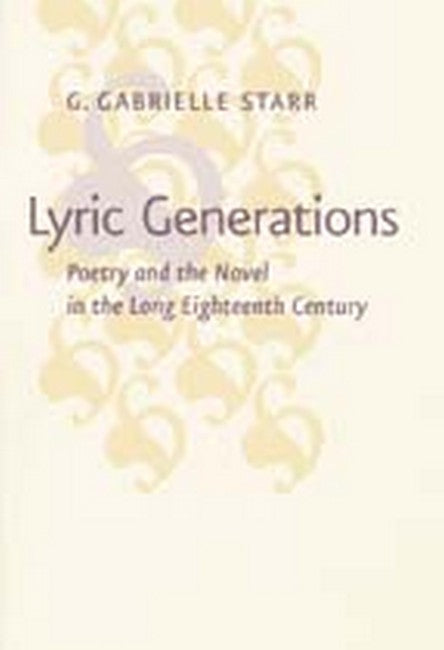''In this invigorating study, Gabrielle Starr shows that the lyric and the novel in the eighteenth century, far from being rivals or opposites, were codependents. In addition to novelistic elements in poems and lyric passages in novels, there were deeper currents of mutual development in a complex reimagining of subjectivity and representation. Lyric Generations ranges over a very wide range of examples, juxtaposing canonical texts with lesser-known ones, and develops a history of generic change that is also a lively and original reinterpretation of individual works.'' -- Leo Damrosch, Harvard UniversityEighteenth-century British literary history is traditionally characterized by two central and seemingly discrete movements: the rise of the novel and the development of Romantic lyric poetry. In fact, recent scholarship reveals that these genres are inextricably bound: constructions of interiority developed in novels changed ideas about what literature could mean and do, encouraging the new focus on private experience and self-perception developed in lyric poetry.In Lyric Generations Gabrielle Starr rejects the usual genealogy of lyric poetry in which Romantic poets are thought to have built solely and directly upon the works of Chaucer, Spenser, Shakespeare, and Milton. She argues instead that novelists such as Richardson, Haywood, Behn and others, while drawing upon earlier lyric conventions, ushered in a new language of self-expression and community that profoundly affected the aesthetic goals of lyric poets. Examining the works of Cowper, Smith, Wordsworth, Coleridge, and Keats in light of their competitive dialogue with the novel, Starr advances a literary history that considers formal characteristics as products of historical change. In a world increasingly defined by prose, poets adapted the new forms, characters, and moral themes of the novel in order to reinvigorate poetic practice.

